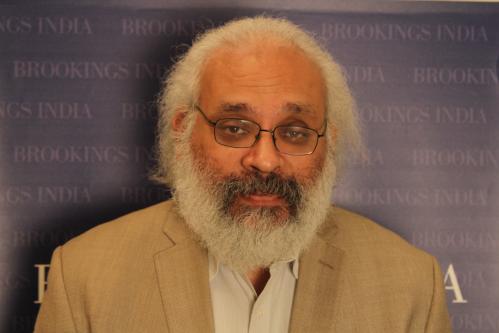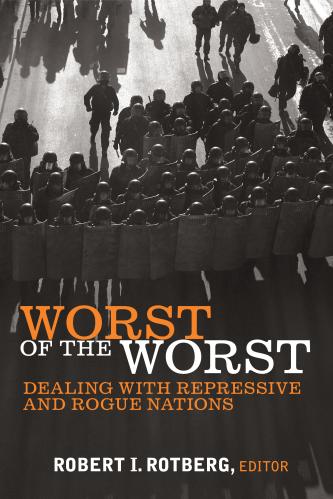Content from the Brookings Institution India Center is now archived. After seven years of an impactful partnership, as of September 11, 2020, Brookings India is now the Centre for Social and Economic Progress, an independent public policy institution based in India.
Behaviour traits of primates can be positive or negative for governance
The institution of the alpha male is common to several species, including virtually all primates. At any given time, one male dominates the group, which, among other things, gives him the exclusive right to reproduce. When an incumbent alpha shows signs of weakening, he is challenged by one of the other males, sometimes in a fight until death. One of the first things that the new alpha does is to kill all the infants in the group, who are clearly the offspring of his predecessor.
This could be a way to speed up his reproductive initiation, in an attempt to maximise the number of offspring that he produces during his alpha tenure. By terminating infants, he ends the lactation period of the females in the group, bringing their next ovulation cycle forward. This is based on the “genetic legacy” motivation; each alpha wants to ensure the perpetuation of his genetic traits in the group. Whatever the reason, there is a rich collection of primatological studies documenting such behaviour amongst gorillas, chimpanzees, baboons, langurs and others.
In case we’ve forgotten, humans are primates too. There are bound to be common behaviour traits across this order. Horrifyingly, infanticide is one of them. But this article is not about female infanticide; rather, it is about another context in which the alpha male behaviour towards the offspring of his predecessor, or what I would call the alpha male syndrome (AMS), is manifest: in the process of governance.
Many years ago, I worked at a policy research institution, which carried out many projects funded by government agencies. One problem we had was an enormous number of projects on which the work was mostly complete but they were not signed off by the funder. Some of these remained in suspended animation for years. On deeper examination, what appeared as a common feature across these projects was that the key person in the agency had changed. The successor typically had his or her own set of priorities and the predecessor’s legacy was brushed aside, with no further interest being taken in it.
During my term at the Reserve Bank of India, I came across several instances of this, both inside and outside, and undoubtedly indulged in some myself. However, one that exemplified it best for me was the experience of a district magistrate, whom I first met in a workshop on financial inclusion. He had received wide recognition and appreciation for a programme he had championed in his district, which brought women into a very effective self-help group framework, integrating production, selling and finance. Some time after this meeting, I visited the district that he was now magistrate of, having shifted from the one in which he had set up the programme. I asked him how the programme was doing. He ruefully admitted that it had ground to a halt. Why? His successor apparently had other priorities. Presumably, having seen the praise that this person had received, he wanted to claim the same with a different initiative.
The examples above clearly point to the negative aspects of AMS. However, to be fair, in the governance context, AMS can also be a positive and constructive instrument of change. Dysfunctional and unproductive systems and processes, which persist because of inertia or patronage, can be ended or restructured with a show of AMS by a new leader. Many organisations have visibly benefited from such an approach. But when we look at both sides of the story, we have to face the fact that AMS could manifest either in a constructive or in a destructive way, and sometimes in both ways simultaneously.
Changes in government obviously unleash AMS with a vengeance. We’ve been seeing a lot of this lately. Two new state governments have reversed their predecessors’ positions on foreign direct investment (FDI) in multi-brand retail. The Delhi government has questioned the functioning of the electricity distribution model, suggesting that the distribution companies have been gouging consumers. A confrontation is brewing, with the possibility that the government may actually cancel distribution licences. Do these actions fall into the positive or negative categories of AMS behaviour?
I believe that all of them reflect the negative aspect of this behaviour. I’m sure many people will disagree, but having reached that conclusion, let me explain why. The rationale for FDI in retail is its need to create a fully integrated national supply chain. India’s size is the big attraction, and it is the attempts of retail chains to exploit this size that should lead to the kinds of investment in supply chains that will benefit farmers and generate jobs. A national market cannot develop if individual states decide that they don’t want to be part of it.
On the power issue, the challenge is really to the regulatory agency. Speaking about infrastructure generally, the existence of a credible independent regulator is essential for the viability of private investment in the sector. The government’s argument questions the independence of the regulator, implying that the agency has been captured by the distribution companies and has been setting tariffs based on inflated input costs. This may be true, but the validity of the position needs to be proven before any decisions about terminating contracts are taken. But if it is established, then the solution does not involve just the distributors; it also requires a revamping of the regulatory structure itself.
To place this in a larger policy context, the current dominant paradigm of long-term development, emerging from exhaustive studies of country experiences, highlights the critical role of robust and durable institutions. From the perspective of economic growth, such institutions facilitate and encourage long-term commitments, pushing more resources into investments like infrastructure, without which any economy is doomed. If every change of government leads to actions that undermine such institutions, the consequence will inevitably be underinvestment in many areas, which are closely related to sustainable growth.
Continuity of policies determining investment in all sectors, the sanctity of long-term contracts and the nurturing of effective regulatory mechanisms are all part of this process. In their eagerness to replace their predecessors’ legacies with their own, new governments risk weakening the institutional foundations of sustained growth. The long-term challenge, then, is to mitigate the risk that such behaviour focuses on casting out the dysfunctional, while working to preserve and strengthen the functional – a more selective and discerning AMS, if you will.
This column first appeared in the Business Standard, on February 10, 2014. The views are of the author(s).








Commentary
Op-edThe Alpha Male Syndrome
February 10, 2014